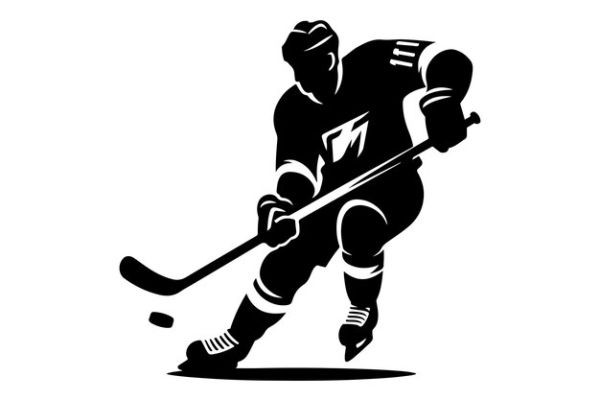The competitive landscape for top collegiate hockey talent in Minnesota continues to intensify, as demonstrated by the increasing number of Division I programs in the state. With the addition of St. Thomas University to the ranks of Division I hockey, Minnesota now boasts six schools at this level, and the proximity of Augustana University, just 20 miles from the Minnesota border, adds another layer of competition.
### The Growth of Division I Hockey in Minnesota
The journey of Minnesota's collegiate hockey landscape from its modest beginnings to a thriving ecosystem of Division I programs has been remarkable. In 1986, the legendary coach Herb Brooks took the helm at St. Cloud State University, transitioning the team from NCAA Division III to Division I. His vision was to provide more opportunities for Minnesotans to play Division I hockey, a vision that has been realized over the years.
Today, the state is home to six Division I schools: Bemidji State, Minnesota, Minnesota Duluth, Minnesota State, St. Cloud State, and St. Thomas. Each of these schools also supports a women's hockey program, underscoring the robust development of the sport within the state.
### Success Stories in Men's and Women's Hockey
The success of Minnesota's Division I programs is evident. Since 2013, Minnesota teams have made significant strides in men's hockey. Teams from the state have reached the Frozen Four 11 times: Minnesota Duluth four times, Minnesota three times, St. Cloud State twice, and Minnesota State twice. Remarkably, in the last three seasons, a Minnesota team has competed in the national championship game each year. Minnesota Duluth claimed back-to-back national titles in 2018 and 2019. In 2021, all five Minnesota men's teams reached the 16-team NCAA tournament, with three advancing to the Frozen Four.
Women's hockey has also seen remarkable achievements. The Minnesota Gophers won national titles in 2013, 2015, and 2016, and finished as runners-up in 2014 and 2019. The Minnesota Duluth women's team reached the Frozen Four in 2021 and 2022.
### The Vision of Herb Brooks and Its Realization
Mike Snee, the executive director of College Hockey, Inc., acknowledges the foresight of Herb Brooks in growing hockey in Minnesota. According to Snee, Minnesota's hockey scene has never been stronger, with the state producing more players than any other in the U.S. and the sport continuing to grow. Minnesota now boasts more NHL players than any other state, aside from Ontario, a testament to the thriving hockey culture in the region.
### The Impact of St. Thomas and Future Possibilities
The move of St. Thomas to Division I in 2021 marked a significant milestone. The university transitioned all its athletic programs from Division III to Division I, leading to a notable increase in local talent on its rosters. The Tommies have the most Minnesotans on their women's team and the second most on their men's team among all Division I teams in the state.
Looking forward, the potential for additional Division I hockey teams in Minnesota hinges on the existing Division II programs. Schools like Concordia-St. Paul, Minnesota-Crookston, Minnesota State University-Moorhead, Southwest Minnesota State, and Winona State could be candidates, provided they elevate all their athletic programs to Division I, a significant undertaking.
### Challenges and Strategic Considerations
Jen Flowers, the athletic director at Southwest Minnesota State, highlights the challenges of adding a Division I hockey program. The financial investment required is substantial, with a need for facilities that meet Division I standards. Flowers cites the example of Augustana's new Midco Arena, which costs approximately $40 million and seats about 3,200 people. For SMSU, adding Division I hockey would mean significant fundraising to build a new arena, as their current facility, the Red Baron Arena & Expo Center, has a seating capacity of only 1,400, insufficient for men's Division I hockey.
### The Competitive Landscape
The addition of Augustana's men's hockey team to the Division I ranks intensifies the competition for Minnesota-born players. Augustana's roster includes nine Minnesotans, and their head coach, Garrett Raboin, is a Minnesota native with strong ties to the state's hockey community.
Brett Larson, the head coach of St. Cloud State men's hockey, acknowledges the growing competition for recruits. This intensified competition has led to significant investments in facilities across the state's Division I programs. Bemidji State, Minnesota Duluth, St. Cloud State, Minnesota State, and St. Thomas have all made notable upgrades to their arenas, enhancing their ability to attract top talent.
### Recruiting and Facility Investments
Minnesota's Division I programs have made considerable investments in their facilities to stay competitive in recruiting. Bemidji State and Minnesota Duluth both moved into new arenas in 2010, while St. Cloud State has undergone multiple renovations and upgrades in recent years. Minnesota State's Mayo Clinic Health System Event Center received updates in 2013 and 2015, including new seating, a new board and glass system, and new locker rooms and offices. St. Thomas is set to move into a new arena in 2025, while the University of Minnesota's 3M Arena at Mariucci has undergone a $14 million renovation.
### The Future of Minnesota Hockey
The future of hockey in Minnesota looks promising, with the state's programs continuing to attract top talent and achieve success on the national stage. Mike Snee emphasizes the importance of facilities in maintaining competitiveness, noting that a minimum of $50 million is required to build a facility that meets Division I standards. Snee and his team at College Hockey, Inc. are actively working to expand the number of Division I programs by targeting schools with proximity to suitable facilities or those with significant financial backing from hockey enthusiasts.
As of this fall, there are 93 women from Minnesota and 83 men playing at the six Division I programs in the state. The competition for top talent in Minnesota is fierce, but with continued investments and strategic planning, the state's hockey programs are well-positioned for sustained success.



